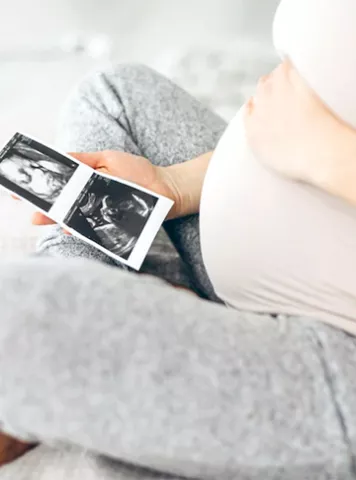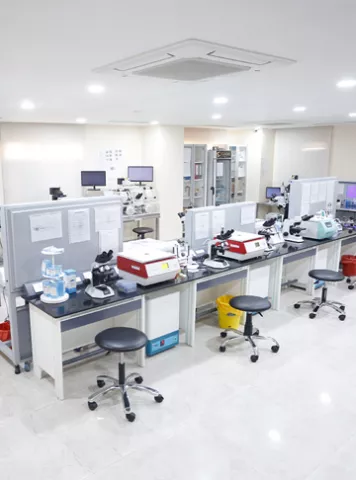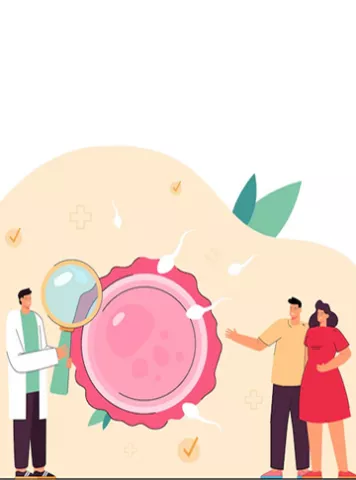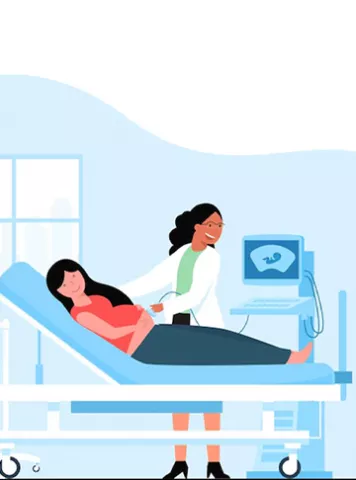Infertility is a condition that affects one in ten couples who are trying to conceive. One of the most common treatments offered in IN VITRO FERTILIZATION. It has helped many couples to achieve their dream of parenthood. Although IVF has such a high success rate, it can be an anxious process to go through. Even more nerve-wracking is the 15 days waiting period after the embryo transfer till the time result is obtained. Patients often become overly focused on any symptoms they experience. A common cause for concern for many women who undergo IVF is spotting after embryo transfer. When a woman is trying to become pregnant, even the smallest amount of bleeding tends to cause concern. So is spotting always BAD? To understand this, let us understand normal physiology first…
Normally during the menstrual cycle, the egg is released from the ovary and is picked up by the adjacent fallopian tube. At the same time, if the partner’s sperm reaches the fallopian tube through the cervix and uterus, fertilization takes place and an embryo is formed. This embryo after 4-5 days is propelled towards the uterus where it makes the connection with an inner layer of the uterus. This process is called implantation. This is sometimes experienced by the woman as slight spotting or bleeding called IMPLANTATION SPOTTING OR BLEEDING.
During IVF, eggs are retrieved from the ovaries, and fertilization with sperm takes place in the laboratories. The resultant embryo formed is then inserted in the uterus, where it implants and creates pregnancy. The implantation of the embryo into the wall of the uterus is not a part of assisted reproduction process; it is something that occurs naturally in exactly the same way as in normal sexual conception. This explains how in terms of the symptoms including implantation spotting or bleeding, they are exactly the same in the case of IVF,
Such spotting after embryo transfer usually occurs 7-10 days post transfer. This is usually self-limiting, lasts for 3-5 days. This is an early sign of pregnancy. This is sometimes associated with slight cramping, nausea, breast tenderness. There is no set pattern, it may or may not occur in all patients. Pregnancies obtained through IVF have a higher rate of bleeding than a spontaneously conceived pregnancy. Roughly 40% of women conceived through IVF experience bleeding or spotting post-transfer.
Spotting immediately after ET can occur if a doctor had technical difficulty during transfer and had to manipulate the cervix. Spotting after the use of vaginal suppositories may be another cause of spotting during the IVF cycle. The vaginal suppositories that are given to prepare the uterus to receive the embryo could cause the cervix to become very sensitive which may result in bleeding especially after sexual intercourse. Patients are advised to abstain from sexual intercourse during part or all of an IVF treatment cycle.
So when should you need to consult a doctor? If bleeding is heavy or painful with cramps and vomiting, one should always consult the doctor and needs to rule out complications like miscarriage or ectopic pregnancy.
Articles
2022


Guide to infertility treatments Blastocyst Culture And Transfer
6 Sexually Transmitted Diseases (STDs) that can make you infertile!
The relation between STD & Infertility- Besides preventing pregnancy, t...
2022


Guide to infertility treatments Blastocyst Culture And Transfer
What Is The Best Advice After Embryo Transfer
In Vitro Fertilisation, popularly referred as IVF has captured attention since...
2022


Guide to infertility treatments Blastocyst Culture And Transfer
Elective single embryo transfer (eSET): A safe option in IVF
What is Single Embryo transfer or SET? Single embryo transfer (SET)is an el...
2022


Guide to infertility treatments Blastocyst Culture And Transfer
What are the Benefits of Frozen Embryo transfer?
Frozen Embryo Childlessness was considered a social stigma since ages. Mill...
2022


Guide to infertility treatments Blastocyst Culture And Transfer
Quality control (QC) concerning pH, temperature and osmolality in the embryology lab
The efficiency of the embryology lab protocols can be improved by conducting r...
2022


Guide to infertility treatments Blastocyst Culture And Transfer
Do’s and Dont’s Post Embryo Transfer
When a couple undergoes IVF or test tube baby treatment, they are in a turmoil...
2022


Guide to infertility treatments Blastocyst Culture And Transfer
Can Single Embryo Transfer Result in Twins?
As the quote by Josh billing “there are two things in life for which we are ...
2022


Guide to infertility treatments Blastocyst Culture And Transfer
Single or Multiple Embryo Transfer – Necessary Points to Know
Embryo Transfer Even though science can give a lot of options, it is not ne...
2022


Guide to infertility treatments Blastocyst Culture And Transfer
In IVF ICSI, What could cause embryos to stop developing
In IVF ICSI, What could cause embryos to stop developing In IVF /ICSI it is...
2020


Guide to infertility treatments Blastocyst Culture And Transfer
What is the diet i require to take after the embryo transfer?
In vitro fertilization is one of the most advanced techniques in the field of ...
Pregnancy Calculator Tools for Confident and Stress-Free Pregnancy Planning
Get quick understanding of your fertility cycle and accordingly make a schedule to track it












